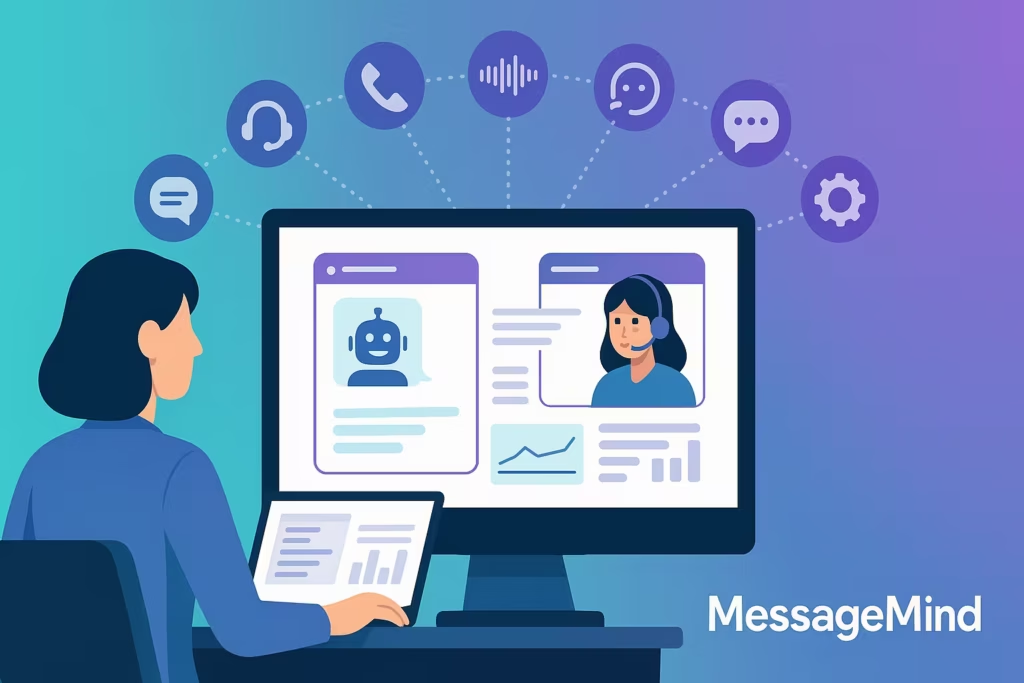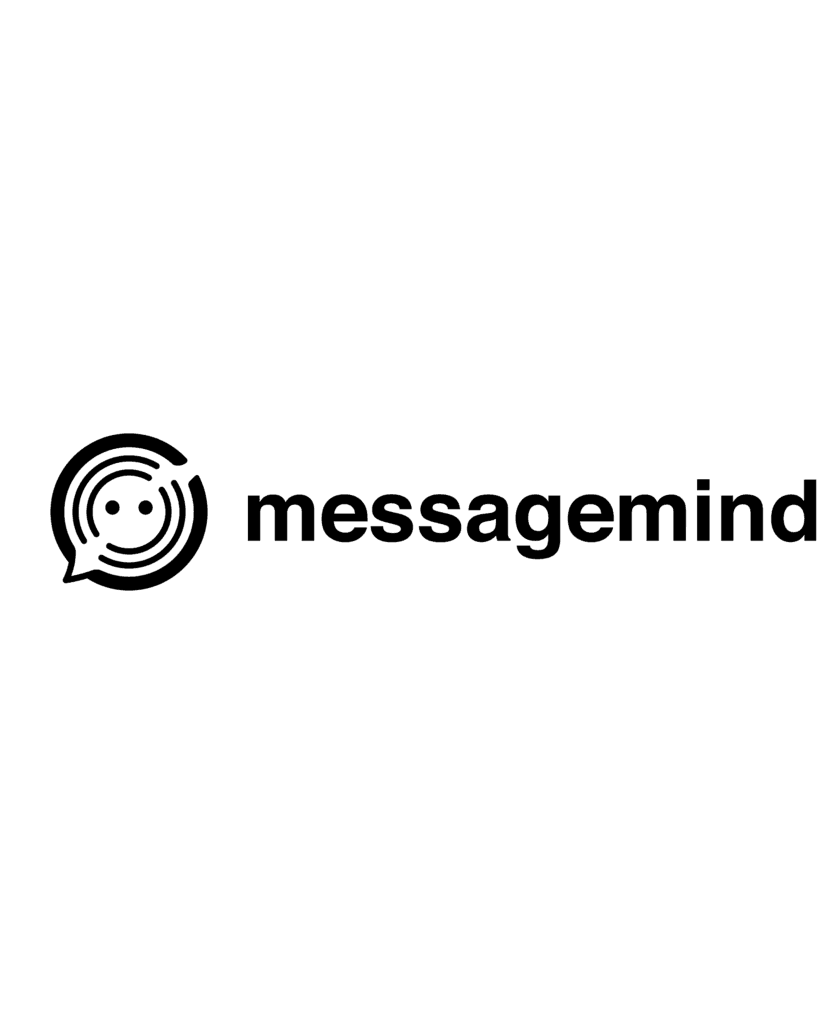Beyond Chatbots: 7 AI Customer Service Trends Every CX Leader Should Watch in 2025

AI in customer service has quietly crossed a line: for many customers, “the bot” is no longer obviously a bot. In 2025, AI isn’t just triaging tickets or answering FAQs — it’s shaping how customers experience your brand across chat, email, voice, and social.
If you lead CX, you don’t need another generic “AI is the future” pitch. You need to know which trends actually matter, how they’ll impact your team, and what to do this quarter to keep up.
Below are seven practical AI customer service trends to watch this year, with examples from players like MessageMind, smith.ai, and Blazeo, plus concrete steps you can act on today.
1. From Scripts to “Human-Like” AI Agents
The first big shift: AI customer service agents no longer sound like decision trees. They sound like your best human agents on a good day.
Platforms like MessageMind focus on human-like AI conversations that can handle support, sales, and basic onboarding across channels — without needing a huge support team behind the scenes. (MessageMind)
Why it matters
- Customers increasingly expect instant, natural responses 24/7.
- AI is now capable of understanding nuance, context, and brand tone — if you train it properly.
- Well-implemented AI can drive higher CSAT and reduce handle time at the same time.
How to act on it
- Start with one or two high-volume journeys (e.g., “order status”, “appointment changes”) and measure resolution, deflection, and CSAT.
- Feed your AI real transcripts and knowledge base content, not just canned FAQs.
- Use tools that support multi-channel coverage (WhatsApp, Instagram, website chat, email, etc.) so you don’t end up with five different bots to maintain. MessageMind’s solutions page gives a good sense of what multi-channel AI looks like in practice. (MessageMind)
2. Hybrid AI + Human Teams Become the Default
The winners in 2025 aren’t “AI-only” or “human-only” teams — they’re hybrid teams where both sides are doing what they’re best at.
- smith.ai blends an AI receptionist with trained human receptionists who step in on complex calls. (smith.ai)
- Blazeo pairs AI voice agents with a 24/7 human call center, giving businesses coverage around the clock without sacrificing empathy. (Blazeo)
Why it matters
- AI is amazing at speed, availability, and consistency.
- Humans are still better at edge cases, escalations, and emotional nuance.
- Hybrid models let you keep SLAs tight and protect your brand in high-stakes situations.
How to act on it
- Design clear escalation rules: When does AI hand off? On which keywords, sentiments, or intents?
- Give agents full AI context (conversation summaries, suggested replies) so they don’t start from zero.
- Benchmark yourself: How often does AI resolve issues end-to-end versus escalate? Aim for higher quality, not just higher deflection.
3. Voice AI and Phone Automation Go Mainstream
Customer support isn’t just text-based. A huge chunk of your customers still pick up the phone, and that’s where voice AI is exploding.
Solutions like Blazeo’s Voice AI use conversational AI to answer, qualify, and route calls, with humans in the loop for complex cases or high-value leads. (Blazeo)
Why it matters
- Phone is still one of the most trust-heavy channels.
- Voice AI can answer every call, even at 2am, cutting missed opportunities and voicemail backlogs.
- It’s also a huge opportunity for Voice Search Optimization (VSO): customers literally speak their questions.
How to act on it
- Map your top phone intents: “I want to book an appointment”, “I need to reschedule”, “I’m checking my order status.”
- Write natural language prompts and flows that sound like how people actually talk, not how forms are written.
- Make sure your AI and humans share the same knowledge base so callers don’t get different answers depending on who picks up.
4. Proactive, Predictive AI Support
The next wave of AI in customer service is proactive: fixing issues before the customer contacts you at all.
AI can detect patterns like “users who see this error twice usually churn” or “customers from this campaign often ask the same three questions,” and trigger help at the right moment. (Crescendo)
Why it matters
- Customers increasingly expect brands to be one step ahead.
- Proactive support can reduce churn, refunds, and negative reviews.
- It turns support from a cost center into a retention and revenue driver.
How to act on it
- Use AI to flag risky behaviors (failed payments, repeated login issues) and trigger:
- In-app nudges
- Outbound messages (email, SMS, WhatsApp)
- Proactive outreach from human agents
- Set up playbooks: “If X happens, send Y message and route to Z team.”
- Use platforms (including MessageMind’s AI platform) that support automation plus human follow-up so you don’t annoy customers with robotic reminders. (MessageMind)
5. AI for Quality, Coaching, and Operations
AI isn’t just for answering customers — it’s quietly becoming the best QA analyst your team has ever had.
Modern tools can:
- Automatically score calls and chats for empathy, policy adherence, and resolution. (Fullview)
- Generate highlights and coaching moments for managers.
- Spot recurring friction points that product or marketing should fix.
Why it matters
- Manual QA typically touches 1–3% of interactions. AI can review 100%.
- You can coach based on patterns, not anecdotes.
- Over time, you create a feedback loop: customer interactions → AI insights → product & process improvements.
How to act on it
- Start by auto-scoring interactions for a small set of signals:
- Was the customer’s actual question answered?
- Was the tone neutral or better?
- Was the resolution clear?
- Use AI summaries to give busy managers a weekly “what changed” snapshot.
- Integrate QA insights back into your AI agent (for example, updating knowledge articles or prompt instructions based on real-world failures).
6. Answer Engines, SEO, and AEO for Support Content
Search is changing fast. Customers don’t just type “refund policy” into Google anymore. They ask:
“How do I get a refund from [your brand] if my order is late?”
That’s where Answer Engine Optimization (AEO) comes in: structuring your content so search engines, AI assistants, and your own AI bots can understand and reuse it. (Crescendo)
Why it matters
- Google’s AI Overviews, chat-based search, and voice assistants are surfacing direct answers, not just blue links.
- Your support content can (and should) power:
- Public SEO results
- In-app help centers
- Your chatbots and AI agents
How to act on it
a) Structure your help content
- Use clear headings and questions:
- “How do I reset my password?”
- “What is your refund policy for subscription plans?”
- Include short, direct answers right after the question, then add detail.
b) Link your AI agent to your content
- Make sure your AI platform can index and reason over your docs, not just hard-coded flows.
- Tools like MessageMind’s documentation hub show how docs, FAQs, and AI agents can share the same source of truth. (MessageMind)
c) Think voice-first
- Write content in a way that sounds natural when read aloud by a voice assistant.
- Include phrases people might actually say:
- “Can I talk to a human?”
- “How do I cancel my appointment?”
7. Trust, Safety, and “Good Governance” for AI Support
The last trend might be the least glamorous — but it’s the most important: trust.
As AI scams, fake customer service lines, and deepfake agents grow, customers are understandably cautious. (TechRadar)
At the same time, analyst firms like Gartner highlight that automation and AI assistants will dominate customer service by 2028, placing huge pressure on brands to get governance right. (Gartner)
Why it matters
- Customers need to trust that your AI is secure, accurate, and clearly labeled.
- Regulators increasingly care about data handling, consent, and AI decision-making.
- A single AI misstep in a sensitive context (healthcare, finance, legal) can cause real harm.
How to act on it
- Be transparent: clearly indicate when customers are talking to AI versus a human.
- Set strong guardrails:
- Define what the AI is not allowed to do (e.g., legal, medical, or financial advice).
- Route high-risk topics to trained humans automatically.
- Train and audit your AI regularly, just as you’d train new hires.
- Choose vendors (MessageMind, smith.ai, Blazeo, etc.) that can articulate their security, privacy, and data retention practices in plain language — not just buzzwords.
Quick FAQ: AI Customer Service in 2025
What is AI in customer service?
AI in customer service refers to software — often powered by large language models and machine learning — that helps answer questions, solve problems, and route conversations across channels like chat, email, voice, and social media. It can act alone (self-service) or assist human agents behind the scenes. (Fullview)
Will AI replace human support agents?
AI will replace some repetitive tasks and low-complexity interactions, but it’s more likely to reshape roles than erase them. The pattern we’re seeing in 2025 is hybrid: AI handles routine work; humans handle complexity, empathy, and relationship-building.
How can small businesses benefit from AI customer service?
Smaller teams can use AI to:
- Offer 24/7 coverage without hiring a night shift.
- Capture and qualify more leads via chat, forms, and voice.
- Give owners and managers better visibility into patterns so they can refine products and services.
Services like smith.ai and Blazeo make this accessible with virtual receptionists and AI chat/voice, while platforms like MessageMind add omnichannel automation and human-like chat for growing teams. (smith.ai)
A Simple AI Customer Service Checklist for CX Leaders
Use this as a quick sanity check for your 2025 roadmap:
Channels
- Do we offer AI support on at least 2–3 key channels our customers actually use?
Hybrid Design
- Are handoffs between AI and humans clearly defined and tracked?
Content & AEO
- Are our help articles written as questions plus short answers to power SEO, AEO, and our own bots?
Quality & Coaching
- Do we review AI interactions as seriously as human ones, with QA and coaching loops?
Trust & Compliance
- Are we transparent about AI usage and careful with sensitive topics & data?
Where MessageMind Fits In (Without the Hype)
There are many solid options in this space — smith.ai for AI receptionists, Blazeo for hybrid voice and live chat, and others for niche use cases.
MessageMind sits in the “AI customer service platform” category:
- AI agents that aim to feel human and on-brand. (MessageMind)
- Support across multiple channels (WhatsApp, Instagram, web chat, email, etc.). (MessageMind)
- A focus on automation + control, so CX leaders can tune prompts, workflows, and integrations instead of coding from scratch. (MessageMind)
If you’re comparing platforms, it’s worth looking at all three: see how each handles real conversations, not just demos.
Call to Action: Start Small, Measure Ruthlessly
You don’t need to “AI-ify” your entire contact center in one go. In fact, you probably shouldn’t.
Instead:
- Pick one or two high-volume problems (like “order status” or “appointment rescheduling”).
- Ship an AI-powered flow that coexists with your human team.
- Track:
- Resolution rate
- CSAT / NPS
- Time to first response
- Agent workload & burnout
If you want to see how an AI-first, human-like support experience could look for your business, you can explore the MessageMind platform overview or book a demo. (MessageMind)
Even if you never become a “100% AI-powered” support org, the CX teams that learn to partner with AI now — thoughtfully, carefully, and with their customers in mind — will be the ones setting the bar for everyone else in 2025 and beyond.

